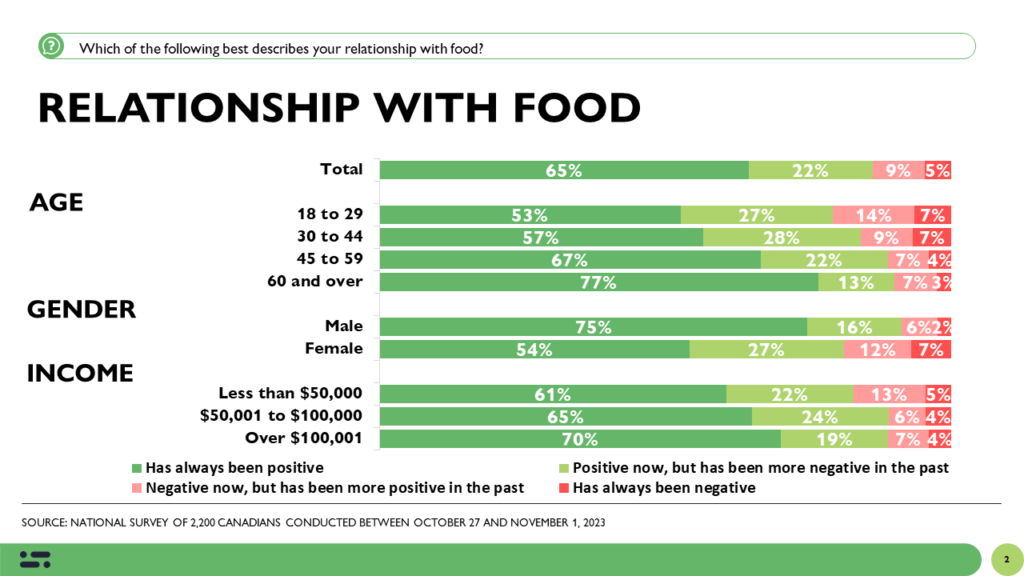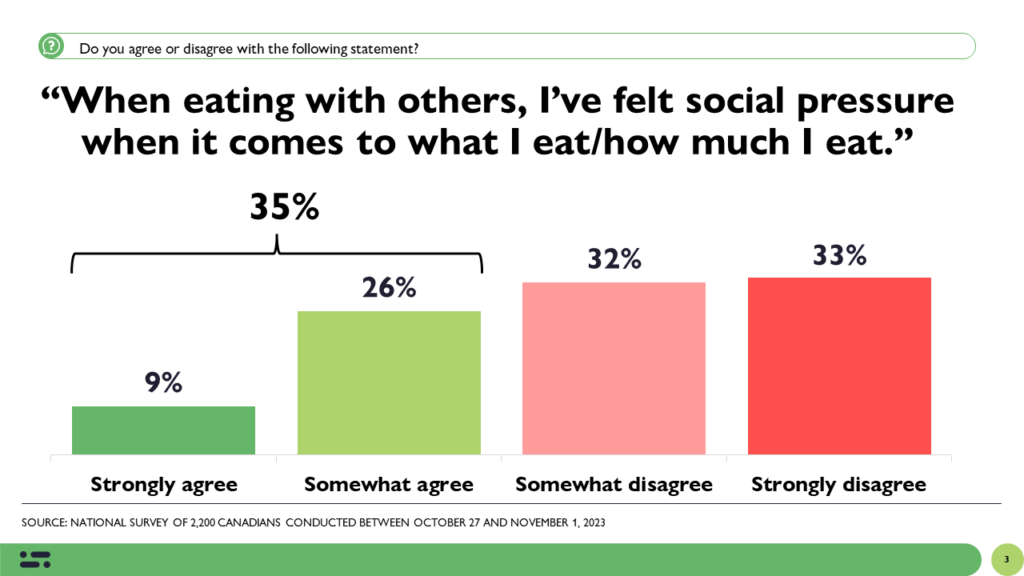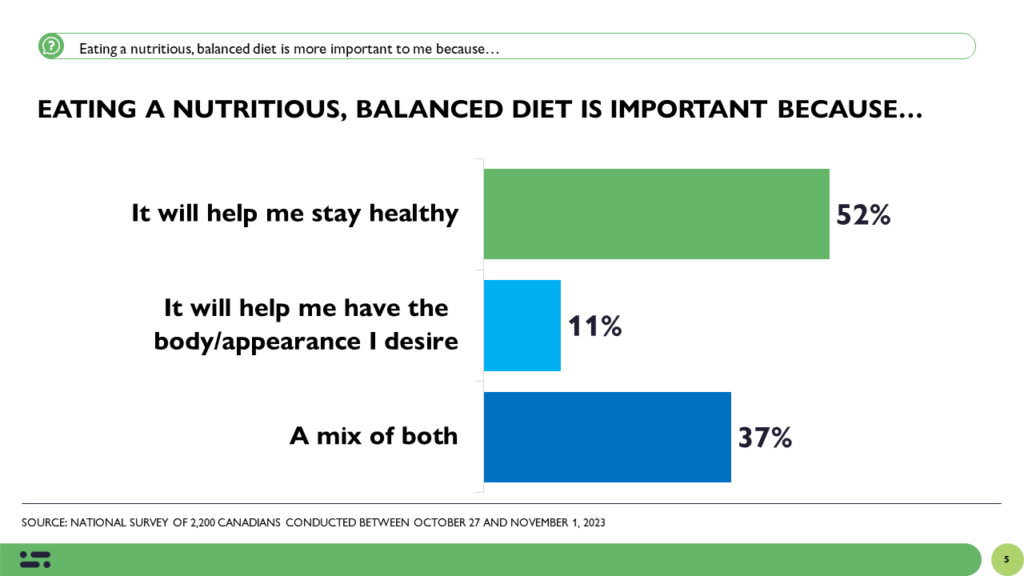Canadians Have a Mixed Relationship With Food- Especially Women
Last month we focused on exploring the topic of housing, including access, affordability and it’s impact on Canadians’ everyday lives. This month, we are focusing on agriculture and food. How do we feel about food? How does it influence our lives? What do we think about the sectors that provide food for Canadians and for the world?
To kick things off this month we asked some questions about Canadians relationship with food. We wanted to understand the relationship Canadians have with food- have they felt pressured to make choices because of social expectations? And as part of our She/Her/Hers work we were curious to see whether these pressures are felt among men vs. women. This survey was fielded online to a sample of n=2,000 gen pop Canadian adults from October 27th to October 31st 2023.
Most Canadians have (and have always had) a positive relationship with food.
65% of Canadians say their relationship with food has always been positive, 22% say positive now but less so in the past, and 9% say negative now but it’s been more positive in the past. 5% have always had a negative relationship with food.
However, relationships with food look very different between men and women. 75% of men say they’ve always had a positive relationship with food. Among women this is only 54%, and among young women (18 to 29) this drops even further to 33%.

Also concerning, young people overall have far more negative relationships with food. Half of young people have experienced a negative relationship with food compared to just a quarter of Canadians 60+. Relationships with food are also influenced by access. Canadians from lower income households are less likely to have a positive relationship with food.
Negative relationships can be driven by external pressures and expectations. One in three Canadians have felt social pressure when it comes to what they eat and how much.

Women are more likely to agree than men and young Canadians (particularly young women) also face a great deal of social pressures compared to older Canadians. 58% of young women say they’ve felt pressure from their peers on what/how much to eat, compared to just 19% of women 60+. Parents of children under 18 (both men and women) also feel more social pressure than average.
As a result, the pressures to eat a nutritious diet aren’t always with health in mind. Half of Canadians eat a nutritious diet because it will help them achieve their desired appearance.
52% of Canadians say a nutritious, balanced diet is important to them because it will help them stay healthy. 11% say it’s important because it will help them have the body/appearance they desire, 37% say it’s a mix of both.

A quarter (23%) of young women (those 18-29), say eating a nutritious, balanced diet is important to them exclusively because it will help them have the body/appearance they desire (12-points higher than the average).
THE UPSHOT
Most Canadians agree that eating a nutritious, balanced diet is important for health, but it is not the only driver that influences our choices and relationship with food. For young people in Canada, especially young women, there are concerningly strong links between relationships with food and body image and social pressures. Given the influence social pressures have on one’s relationship with food, addressing social expectations on food consumption and on appearance is an important place to start in improving our collective relationship with food.
She/Her/Hers is a research practice dedicated to exploring how the lived experiences of Canadians, their behaviours, and attitudes are gendered. The study explores a range of subject areas that inform what it’s like being a Canadian woman today – from home life, to work life, to finances, to consumer behaviour. To learn more about the study please reach out to: oksana@abacusdata.ca
To purchase the She/Her/Hers study please reach out to: yvonne@abacusdata.ca
METHODOLOGY
The survey was conducted with 2,200 Canadian adults from October 27 to November 1, 2023. A random sample of panelists were invited to complete the survey from a set of partner panels based on the Lucid exchange platform. These partners are typically double opt-in survey panels, blended to manage out potential skews in the data from a single source.
The margin of error for a comparable probability-based random sample of the same size is +/- 2.1%, 19 times out of 20.
The data were weighted according to census data to ensure that the sample matched Canada’s population according to age, gender, educational attainment, and region. Totals may not add up to 100 due to rounding.
This survey was paid for by Abacus Data Inc.
ABOUT ABACUS DATA
Abacus Data follows the CRIC Public Opinion Research Standards and Disclosure Requirements that can be found here: https://canadianresearchinsightscouncil.ca/standards/
We are the only research and strategy firm that helps organizations respond to the disruptive risks and opportunities in a world where demographics and technology are changing more quickly than ever.
We are an innovative, fast-growing public opinion and marketing research consultancy. We use the latest technology, sound science, and deep experience to generate top-flight research-based advice to our clients. We offer global research capacity with a strong focus on customer service, attention to detail, and exceptional value.
We were one of the most accurate pollsters conducting research during the 2021 Canadian election following up on our outstanding record in 2019.
Contact us with any questions.
Find out more about how we can help your organization by downloading our corporate profile and service offering.